Finding a successful ad creative is half the battle of a mobile performance campaign. It guarantees you new paying users and increasing brand awareness. However, that’s all theoretical…
In reality, you still need to figure out — what actually is a “successful creative”? How on earth to come up with creative hypotheses that will perform? And how can you understand that your ad creative will snag a target user?
Creative managers from the performance marketing agency, AdQuantum, are clearing up this and many more matters about mobile ad creatives. From this article you will learn:
- the rules for top performing mobile creatives;
- the topics that work best in advertising;
- future mobile ad creative trends.
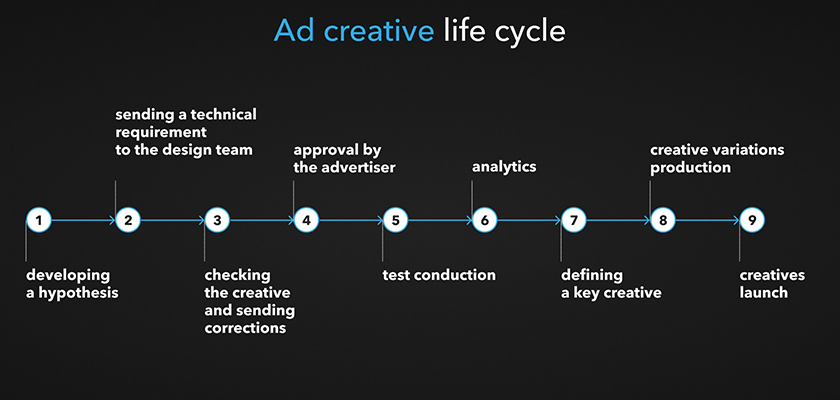
Designing an Ad Creative
1. Developing a Hypothesis
The base of every creative is an idea. Ideas, the viability of which are proved with special tests, are called hypotheses. To define a working idea, you need to form a pool of hypotheses. A design team will then put these hypotheses into practice. The result of which is the final product — a mobile ad creative.
In the fields where business and creativity meet, there are 2 ways to develop ideas (which are often combined):
- we check other projects’ working approaches;
- we create something fundamentally new.
Every person perceives these options in their own way. We recommend using both, and here’s why.
There are only 7 musical notes, but they are combined in a wide variety of music. This is exactly how it is in the mobile marketing industry: one fine day a mobile marketer launched a specific ad. Out of the blue, it worked. Then someone adopted the idea it conveyed and designed a new one based on that previous working creativity. And it worked just as well. Seeing what methods have been used on other projects, refining them, and growing something of their own is quite a successful strategy. We call this proficiency.
Taking unverified creative ideas just because they seem “cool” to you is ineffective. Often it’s just a waste of time and money.
But as we know, every creative person always wants to bring something new into this world. Thus, you can compromise: imagine, you have to produce 10 creatives. Out of the 10, 9 creatives could be designed according to proven hypotheses, with the 10th one being created according to our own, completely new and unproven hypothesis. It also has a high chance to perform.
And this way you start playing with ideas, sorting through everything that comes to mind. A great method for this stage is Maslow’s hierarchy of needs. What you do is try to implement each need concept in your ad creative. For instance, you start with the concept of sex — did it work? If not, then move on to the concept of love. Didn’t work either? You can try the concept of achieving success. At some point, among these needs, you will find one that will hook your audience.

2. Setting a Technical Requirement for a Design Team
No matter whether you think your technical requirement is perfectly written, no one can get into your head. Every person can see the same idea in completely different ways. Therefore, when setting technical requirements for motion designers, it is important to apply as many references as possible. This relates both to fundamentally new ideas and to already existing ones that you want to try in your project.
If you want to implement a new idea, you need to show in detail what you want to see in the end result, so do not refrain from sharing specific references.
Building a creative based on an idea for another project’s creative? References are still crucial. You do not know for sure what made the user pay attention to this exact creative you refer to, you can only make assumptions. Therefore, it is important to show the designer all the details so as not to miss the key one.
3. Making Edits
The formula for creative success is plain and simple: 33% is an idea, 33% is its realization, another 33% is the work of a UA manager, and 1% is left for sheer luck.
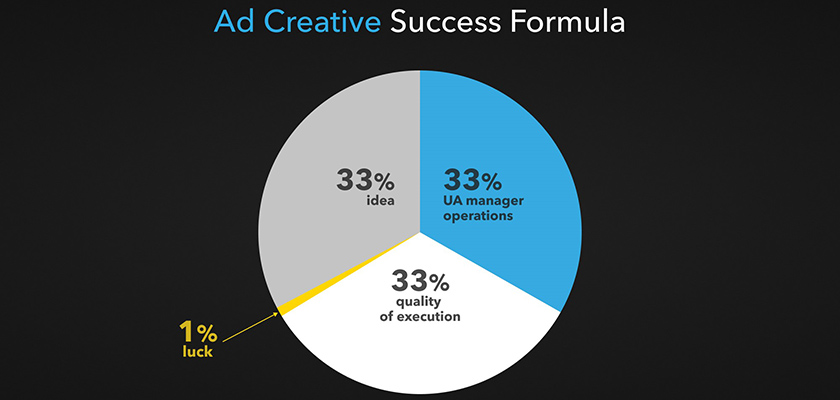
Before you empirically find out how successful your brand new creation is, you can do a simple test.
Having received the creative from the designer, first of all, watch it as you have never ever known what it is going to be about. Like this is not your creative at all and then right after you watched it, ask yourself: was the idea conveyed well? If the idea is easy to interpret, half the battle is done.
After that, you need to pay great attention to the technical part, to how the creative is designed. It is important that the animation does not freeze, the graphics are sharp, and the picture is clearly visible even at 40% smartphone screen brightness. The quality of execution is just as important as the content of the creative.
In addition to the quality of the idea and its implementation, the work of the UA manager also plays a significant role: what audience they will upload this creative to, and in what combination.
4. Approval from the Advertiser
Typically, the client initially sends the agency a minimum list of requirements for what should NOT be in the creative. For example, low necklines or let’s say… motorcycles. That means, they do not want sexualisation and motorcycles to be associated with their app, and that’s that. Therefore, ads should be created, taking into account this blacklist. Once the creative is approved by the advertiser, it is sent for launch.
5. Creative Testing
Testing hypotheses is an important stage in UA campaigns. Nonetheless, multiple companies often ignore it — as a result, they lose money. Oftentimes, when product teams claim that Facebook ads aren’t working for their mobile app, they simply haven’t tested their creatives. Okay, maybe they actually did, but only a single test iteration. And this is not enough for objective conclusions: they have not tested enough audiences and creative variations to make a judgment.
Creative testing helps:
a) determine the app’s target audience;
b) understand the hypothesis and specific creatives efficiency;
c) choose the best combinations of creatives and targeting.
The test logic is simple: before you start scaling budgets for driving traffic to creatives, it is important to find out first whether these creatives will perform at all. What if they don’t work? Then the money will be wasted. To avoid this, creatives are launched in test mode, for only a few days.
Usually, from the first day, key metrics make it clear how viable a creative is. The advertiser immediately sets the benchmark for key metrics — those metrics you should aim for. Usually, these are CTR, IR, IPM, CPI. But they differ from one project to another.
But a frequent situation in practice is when a creative test is close to the desired metrics, but not quite there. That is, you are close to the desired metrics, but have not achieved them. This does not mean that creativity is bad, but more likely something is not fully tuned. But where? We need to figure it out. The analytics stage is coming.
6. Analytics and Defining a Key Creative
Analytics is like building Lego figures. Metrics here help to correct these figures. You disassemble a creative that successfully passed the test by small pieces and then shuffle these pieces in search of the perfect combination.
For example, according to our tests, we found out that the white background did not work at all. All creatives for that fitness app containing white backgrounds gave us worse metrics than those with black backgrounds.
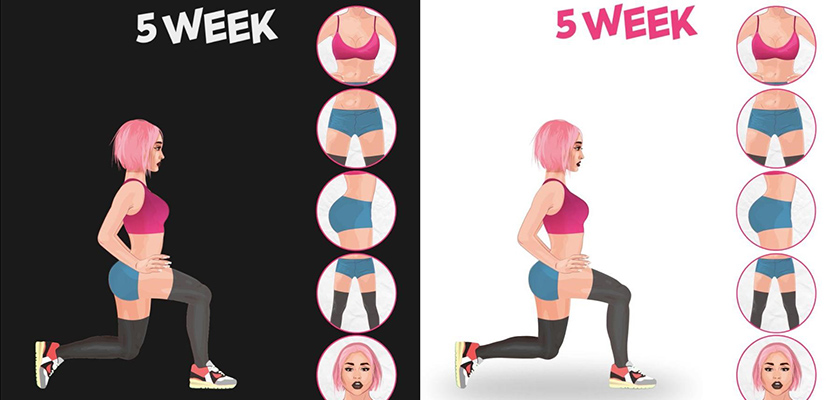
As a result, we define the best configuration — a creative that has surpassed all the specified criteria. It is called a “key creative”.
7. Creative Variations Production
Every creative gradually “burns out”. This means that this exact audience has already seen this creative and can no longer be attracted to an app by it.
The audience is divided into burnt layers as follows: first, the narrowest, the super-target layer is burnt out. It consists of the most paying users and gives the highest Return on Investment (ROI).
After that, we move on to the target audience. It will give us the lower ROI — the layer itself is wider though. At last, we go on to the widest, “near-target” audience, least relevant for us and the least paying.
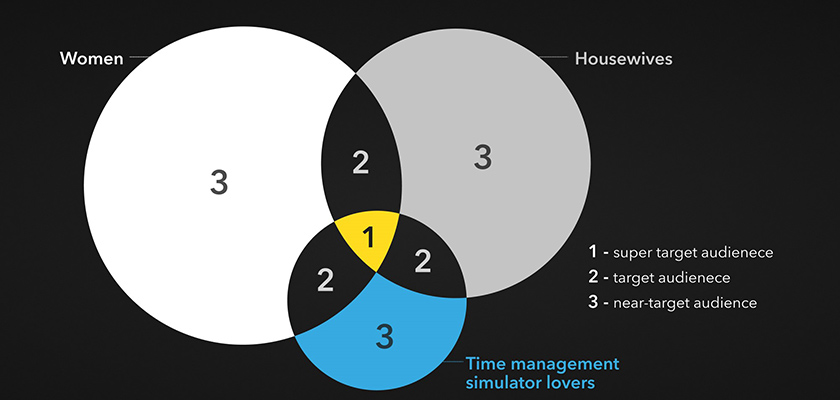
To achieve this, we design multiple creative variations: add to the core mechanics similar mechanics from ads for other apps. We produce about 10 variations for each successful creative. The more there is the better chance of success.
8. Ad Creatives Launch
The creative has done its job and a user has installed the app. The next goal is to retain users in the app itself, but this is the developer’s area of responsibility.
Successful Mobile Creative Rules
As a special bonus, we will tell you about the Five D’s rule we have deduced. Adhering to these, you will produce an ad creative that has a significant chance of high performance.
Five D’s Rule
1. Design
The main things here are simplicity and quality of execution. No fancy or overly complicated designs are needed. A simple, unweighted ad message is easier and faster to perceive than framed in a stylish but unreadable design.
2. Deliverability
The idea should be clear and understandable to the user. Moreover, it is important that it be accessible and interesting to a wide audience. A creative that aims only for a narrow audience is not really a good one. Your task is to design a universal creative, the target of which is basically every person worldwide.
3. Duration
The optimal creative duration for ad networks is 25-30 seconds, for social networks, it is 10-15 seconds. Ads shorter than 7 seconds and longer than 35 seconds are usually difficult to perceive.
Of course, there are exceptions to every rule. Therefore, the length of the video might vary depending on the app vertical. Gaming app creatives usually last longer because the task is to show a user beautiful settings and game mechanics. It is really hard to fit all this in just 10 seconds.
People usually come to non-gaming apps in order to solve some problem: for example, lose weight, earn money or find a life partner. That is why it is so important to show through the ad creative how quickly they could achieve a desirable result thanks to using your app.
For example, if you are promoting a fitness app, the creative in this case should convey a message: “You will lose weight quickly.” And we see how a person loses weight in literally 7 seconds. If a user instantly finds a solution to their problem in a creative, they would most likely download the app.
4. Dynamics
Even in a short creative, plot is important. Very few people would want to watch the same frame for 15 seconds. Therefore, the dynamics and the presence of points grabbing attention are essential. This is something similar to the “suspense” technique in cinema.
Parachutes are those interesting or anxious moments in the storyline that keep the spectator glued to the screen until something happens. Let’s say you want to make a 45-second ad creative. In that case, it is important to insert parachutes into the plot so that the video can be easily and naturally watched and enjoyed by the user until the end.
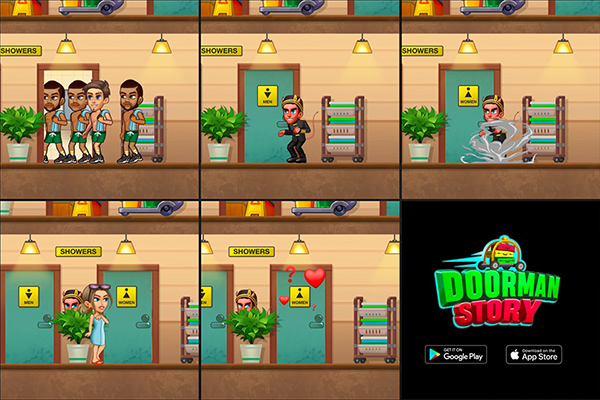
5. ‘Do It Now’ Call
Ever true is that at the end of any ad, it is important to make a call to action (CTA). In fact, this is what the ads are made for. We designed a creative — so the user should follow the link and install the app.
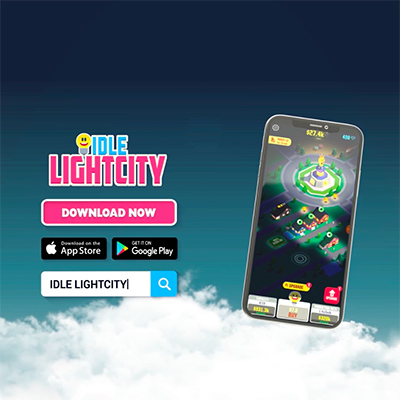
Future Ad Creatives
The world is moving forward, the mobile marketing industry is developing by leaps and bounds. Mobile app ad creatives nowadays aren’t just an ad that sells a product. Advertising has transformed into art: with a complex plot, sophisticated production, and expensive post-production, with acting. Some mobile brands, for example, are already attracting Hollywood stars, spending huge amounts of money, time, and resources to produce a 30-second ad for targeted ads.
When producing or ordering creatives, rely on the quality, as the consumer becomes pickier and pickier every day.


